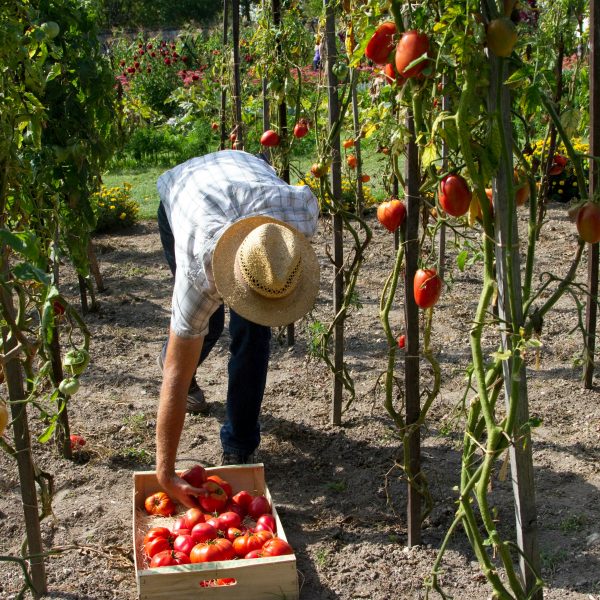Article
Three key changes to IHT
Article
Three key changes to IHT
November 11, 2024
5 minute read
There were three key changes to Inheritance Tax (IHT) in the UK Budget 2024. 1. Restriction of Business Property Relief and Agricultural Property Relief Announced at the budget was the creation of a lifetime allowance for certain IHT reliefs, which restricts Agricultural Property Relief (APR) and Business Property Relief (BPR) to a total claim of […]

There were three key changes to Inheritance Tax (IHT) in the UK Budget 2024.
1. Restriction of Business Property Relief and Agricultural Property Relief
Announced at the budget was the creation of a lifetime allowance for certain IHT reliefs, which restricts Agricultural Property Relief (APR) and Business Property Relief (BPR) to a total claim of £1m at 100%. The remainder of the value covered by APR and/or BPR will be restricted to a rate of 50%. This change is applied from 6 April 2026, and so deaths before this date will still continue to receive APR and BPR in the current manner.
As a result, estates which previously would have qualified for IHT relief in full are now likely to be subject to IHT, albeit with some relief applied. Where there is a payment of IHT arising from the application of only 50% APR or BPR, the payment can be spread over 10 yearly instalments, which under current rules will not attract interest in most cases, as long as the payments are made on time.
Whilst the effective IHT rate on assets in excess of £1m is sometimes described as 20%, the rate of IHT charged is 40% on 50% of the value not covered by APR or BPR, rather than a reduced IHT rate of 20%. This distinction has consequences to the IHT calculation if the Nil Rate Band is being offset against APR/BPR qualifying assets, because the IHT Nil Rate Band (currently £325,000 per person) is applied after the 50% relief has been accounted for.
As an example, let’s assume a farmer leaves their home and other assets to their surviving spouse (which will be exempt for IHT purposes). They own APR qualifying farmland which they wish to pass to their children on their death. They haven’t made any other gifts or transfers in the 7 years before they died.
With a value of £1.65m for the farmland, the IHT calculation is as below:
|
Value of estate (wholly farmland qualifying for APR) |
£
1,650,000 |
|
| Less APR at 100% | (1,000,000) | |
| Less APR at 50% | (325,000) | |
| Chargeable Estate before Nil Rate Band | 325,000 | |
| Less Nil Rate Band | (325,000) | |
| Estate Chargeable to IHT | 0 | |
| IHT Payable @ 40% | 0 | |
If the farmland was instead valued at £2m, the IHT calculation would be as follows:
|
Value of estate (wholly farmland qualifying for APR) |
£
2,000,000 |
|
| Less APR at 100% | (1,000,000) | |
| Less APR at 50% | (500,000) | |
| Chargeable Estate before Nil Rate Band | 500,000 | |
| Less Nil Rate Band | (325,000) | |
| Estate Chargeable to IHT | 175,000 | |
| IHT Payable @ 40% | 70,000 | |
The £1m allowance cannot be transferred to a surviving spouse – if it is not used on the first death it cannot be used in addition to the surviving spouse’s allowance on their death (unlike the unused IHT Nil Rate Band which can be transferred and used on the second death).
Application of restrictions to Trusts
For relevant property trusts settled before 30 October 2024, each trust will have an allowance of £1m available where APR and/or BPR can be applied at 100%. Remaining qualifying balances in excess of this amount will receive relief at 50%. The trust nil rate band, which differs between settlements depending on the position of the Settlor, remains available to offset against the chargeable assets in the same manner as detailed above.
For trusts settled on or after 30 October 2024, it is understood that the lifetime allowance will be split between all new trusts created by that settlor, and therefore if two trusts are settled after this date each will have a 100% allowance of £500,000 each when the ten year charge arises. There is a consultation period in Spring 2025 which will clarify these matters further.
On new settlements, APR and BPR will continue to apply to qualifying transactions for the purpose of the chargeable lifetime transfer into trust until 6 April 2026, and therefore still represents a possible opportunity to pass wealth to the next generation at a lower rate of IHT than passing assets on death, subject to the qualifying criteria. However, it is understood that any transfer made now will utilise the £1m 100% allowance available for the person’s estate.
2. Application of 50% BPR to shares held in Alternative Investment Market (AIM) companies
On or after 6 April 2026, AIM shares will be subject to IHT relief at a rate of 50%, rather than the rate currently applied of 100%. (The 50% relief applied to AIM does not impact the £1m 100% allowance.)
3. Application of IHT to Pensions
At present, pensions are outside of the scope of IHT on an individual’s death. However, from 6 April 2027 pensions will be charged to IHT.
Subject to any further changes in the rules, in most cases if the deceased is under 75 on death, the pension can be withdrawn by the beneficiaries tax free. If over 75, income tax will be payable at the recipient’s marginal rate of tax.
Where the deceased person is aged over 75, their pension may be subject to IHT at 40% and the recipient subject to income tax at up to 45% on the remainder, resulting in an effective tax rate of up to 67% on the value of the pension at death if withdrawn immediately by the beneficiary.
Spousal relief will continue to be available, meaning if the pension is passed to the surviving spouse then no IHT will be due.
Drop me a line or speak to your usual adviser for more.
Related content
Need expert advice?
Speak to an expert for advice on
+44-1865 292200 or get in touch online to find out how Shaw Gibbs can help you
Email
info@shawgibbs.com
Need expert advice?
Speak to an expert for advice on
+44-1865 292200 or get in touch online to find out how Shaw Gibbs can help you
Email
info@shawgibbs.com




